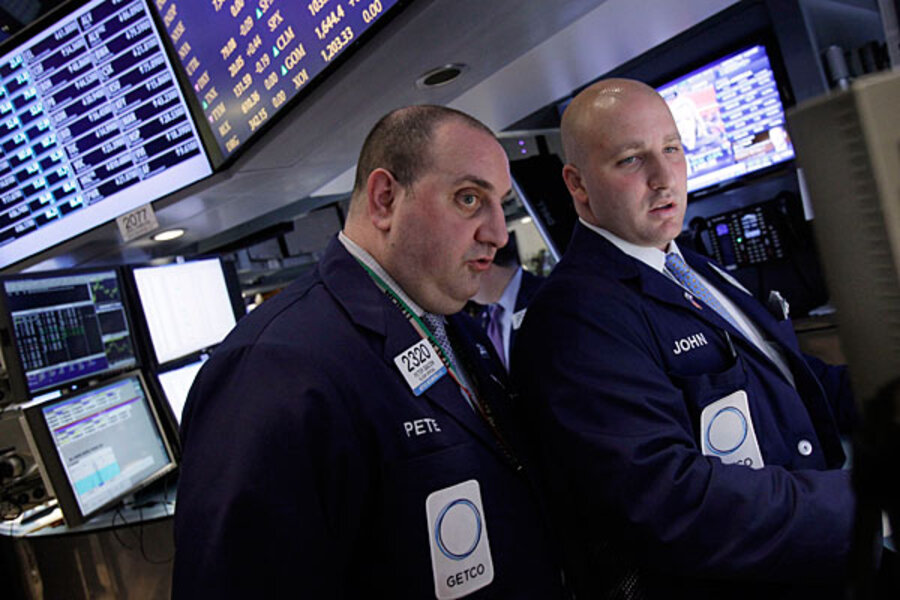Why stock market is spinning its wheels despite positive trends
Loading...
First it was the jobless recovery. Now it seems like the joyless recovery. Despite gains in personal incomes and spending for March, the US stock market sagged Monday.
The Dow Jones Industrial Average spent the morning in negative terrain, compared with Friday's close, and that's part of a broader trend.
After rising in this year's early weeks, the widely watched Dow index has been treading water since February, a little below or above the 13000 level.
What's holding back investor spirits?
Corporate profits, after all, have reached historically high levels, yet the Dow's level of about 13200 Monday remains well below the pre-recession peak (about 700 points above that).
Two factors appear to be important:
- America's economic momentum, embodied in the news about consumer incomes and spending, is still tepid.
- The US is currently the patch of green in a global landscape characterized by the economic equivalent of a drought in Europe and storm threats in China and Iran.
Here's what the Commerce Department reported: Personal income in the US rose 0.4 percent in March, and spending rose by a similar amount, 0.3 percent. Not racing forward, especially when inflation is taken into account, but those are steps of progress.
"The good news in this report is the strength in income," said IHS Global Insight economist Leslie Levesque in a written analysis. "For the first time this year, growth in income ... was in positive territory" even after adjusting for inflation and taxes.
Consumer spending, also rising faster than inflation in the government's report for March, represents the vital bulwark of economic growth. When incomes are rising and consumers spend, business tend to increase hiring.
Monday's news confirms the impression left on financial markets last week, when the government's estimate of first-quarter economic growth came in weaker than expected. The report showed gross domestic product (GDP) rising at a 2.2 percent annual pace, with the gains largely fueled by domestic consumption. (Business investment is also rising, while changes in government consumption and foreign trade subtracted from the growth rate.)
Overall, economists see welcome signs of a recovery that has solid footing in the US. The woes in the housing market are starting to fade, and private sector employers have been adding jobs each month, contributing to the gains in consumer income. Many forecasters see the economy growing at a similar pace in the current quarter.
To some extent, consumers are showing a happier mood, although not exuberance.
"Consumer sentiment has clearly improved somewhat in recent months, aided by steadily the improving job market and better economic news flow," economist Chris Williamson of the financial-data firm Markit said in an analysis of the GDP numbers Friday.
But judging by the stock market, investors have an eye on the risks as well as the progress.
In the US, they don't see a lot of room for positive surprises. The personal income and spending report, for example, showed that US consumers have been saving less of their income in recent months. With the savings rate at 3.8 percent of disposable income in March, household savings don't look as healthy as last year's level of 4.7 percent.
After a post-recession rebound, gains in corporate profits may be modest in coming quarters, which could explain the lackluster performance of the Dow and other stock indexes.
Global forces also weigh on the economic outlook. Investors responded Monday to news that Spain's economy is in recession, reporting two straight quarters of decline in GDP. That news points to broader worries about how weakness in Europe will affect the global economy.
Other danger spots include the risk of a further spike in oil prices if tension surrounding Iran's nuclear program intensifies, and the risk that China's cooling economy could have a "hard landing."
For now, IHS Global Insight expects China and the US to muddle through and lead the world economy higher. The firm's forecast for global GDP growth is 2.8 percent for 2012, and 3.6 percent in 2013.







